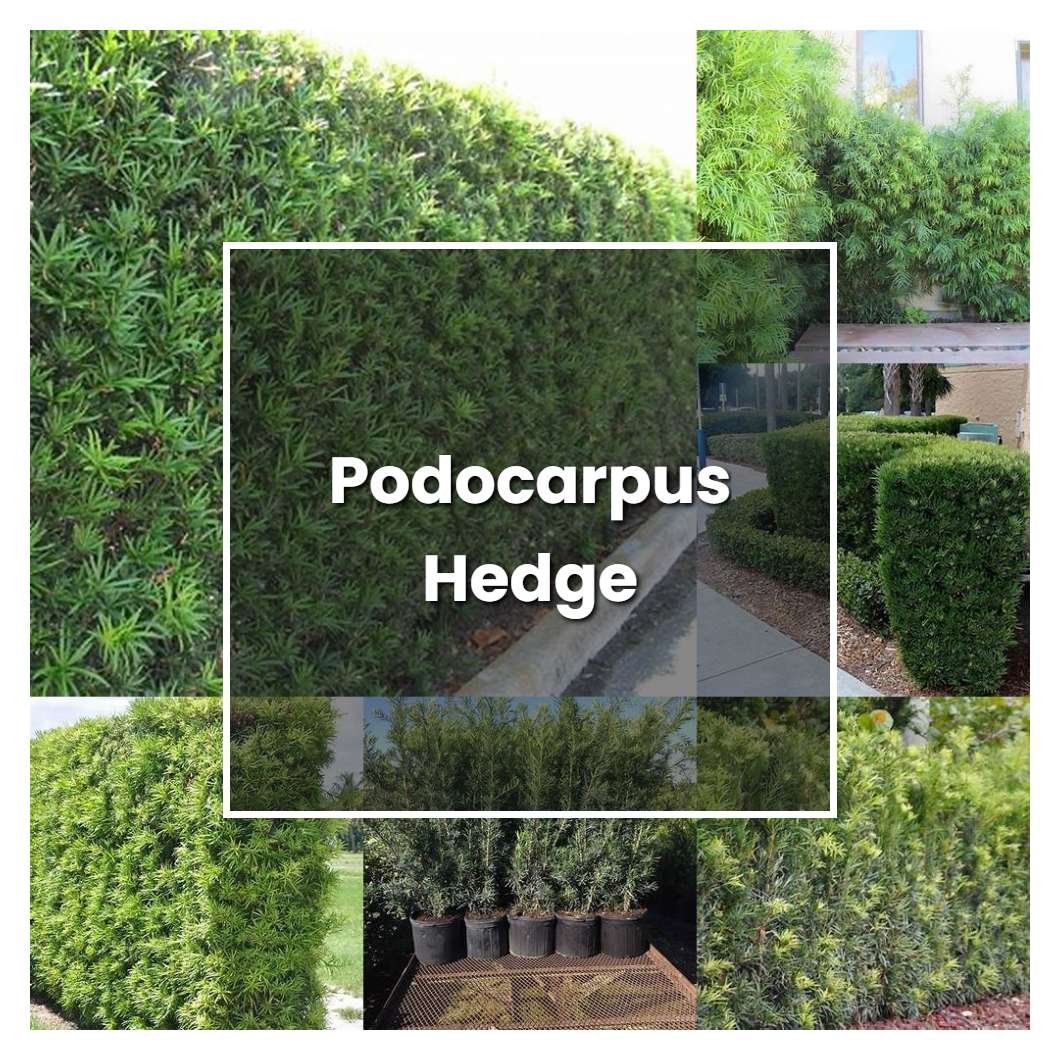Podocarpus hedge is a fast-growing, low-maintenance hedge plant that can provide privacy and can be used as a windbreak. It is also drought-tolerant and can be used in areas that are prone to wildfires.

Related plant:
Podocarpus Shrub
Related plant:
Podocarpus Gracilior
About soil condition, a podocarpus hedge can grow in average to moist, well-drained soils, but it also prefers sandy soils that are high in organic matter. The soil must be well aerated so that the roots can grow properly. The best time to plant a podocarpus hedge is in the spring or fall.
Not too different with other varieties of podocarpus, the hedge variety also requires a good amount of sunlight to maintain its vibrant color. If you live in an area with little sun, you may find that your podocarpus hedge doesn't look as full and lush as it could. To ensure that your hedge gets enough sunlight, prune it regularly to allow sunlight to reach the inner branches.
The temperature conditions that are best for a podocarpus hedge are fairly warm conditions. The hedge should be in an area where it will get at least six hours of sunlight each day. If the temperature conditions are too cold, the hedge will not thrive.
Ideal humidity condition for this plant is 50%. If the humidity drops below this number, the leaves will start to turn brown and drop off. If the humidity gets too high, the leaves will start to yellow.
Regarding fertilizer, usually the plant does not need much. If you are using some type of organic fertilizer, such as compost, you can apply it a few times a year. When it comes to watering, this plant is drought tolerant once established, but during its first year or two you will need to water it regularly. The roots of the plant are quite deep, so make sure you water it deeply as well.
Pruning a podocarpus hedge is a simple process that can be done with a few basic tools. hedges should be pruned in early spring before new growth begins. This will ensure that the hedge stays compact and full. To prune a podocarpus hedge, first, cut back any dead or damaged branches. Next, trim the hedge to the desired height and shape. Finally, use a hand pruner or shears to remove any stray branches or leaves.
Propagation of podocarpus hedge is best done through seed germination. The best time to sow the seeds is in late spring or early summer. Soak the seeds in water for 24 hours before planting. Plant the seeds in a well-drained seed-starting mix and cover with a thin layer of sand. Place the seed-starting tray in a warm, sunny location. Keep the soil moist but not wet. The seeds will germinate in 10-21 days. Once the seedlings have emerged, transplant them into 4-inch pots filled with a well-drained potting mix.
Usually, the plant growth rate plants will reach a height of 20-30 feet in 10-15 years. The podocarpus hedge is a fast-growing, dense, evergreen shrub that is often used as a hedge or privacy screen. It has dark green, shiny leaves and can tolerate a wide range of growing conditions. Podocarpus hedge is an easy plant to care for and is relatively drought tolerant once established.
Common problems for this kind of plant are that the leaves may turn yellow and fall off, the new growth may be stunted, and the plant may be less drought tolerant. These problems are usually due to too much water, in particular, over- watering.
Source:
Podocarpus macrophyllus - North Carolina State University
ENH654/ST495: Podocarpus macrophyllus: Podocarpus - University of Florida
ENH656/ST497: Podocarpus nagi: Nagi Podocarpus - University of Florida
